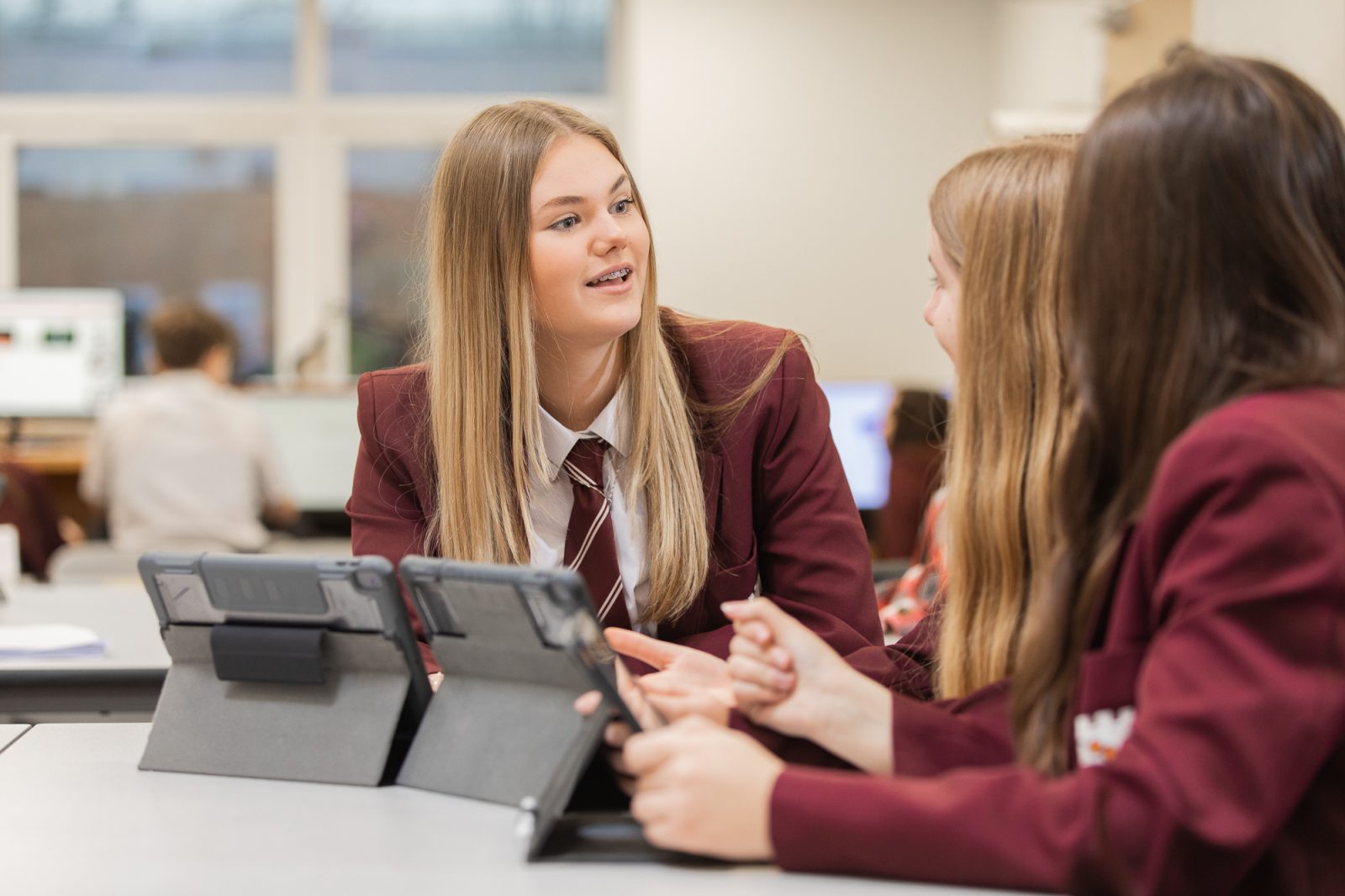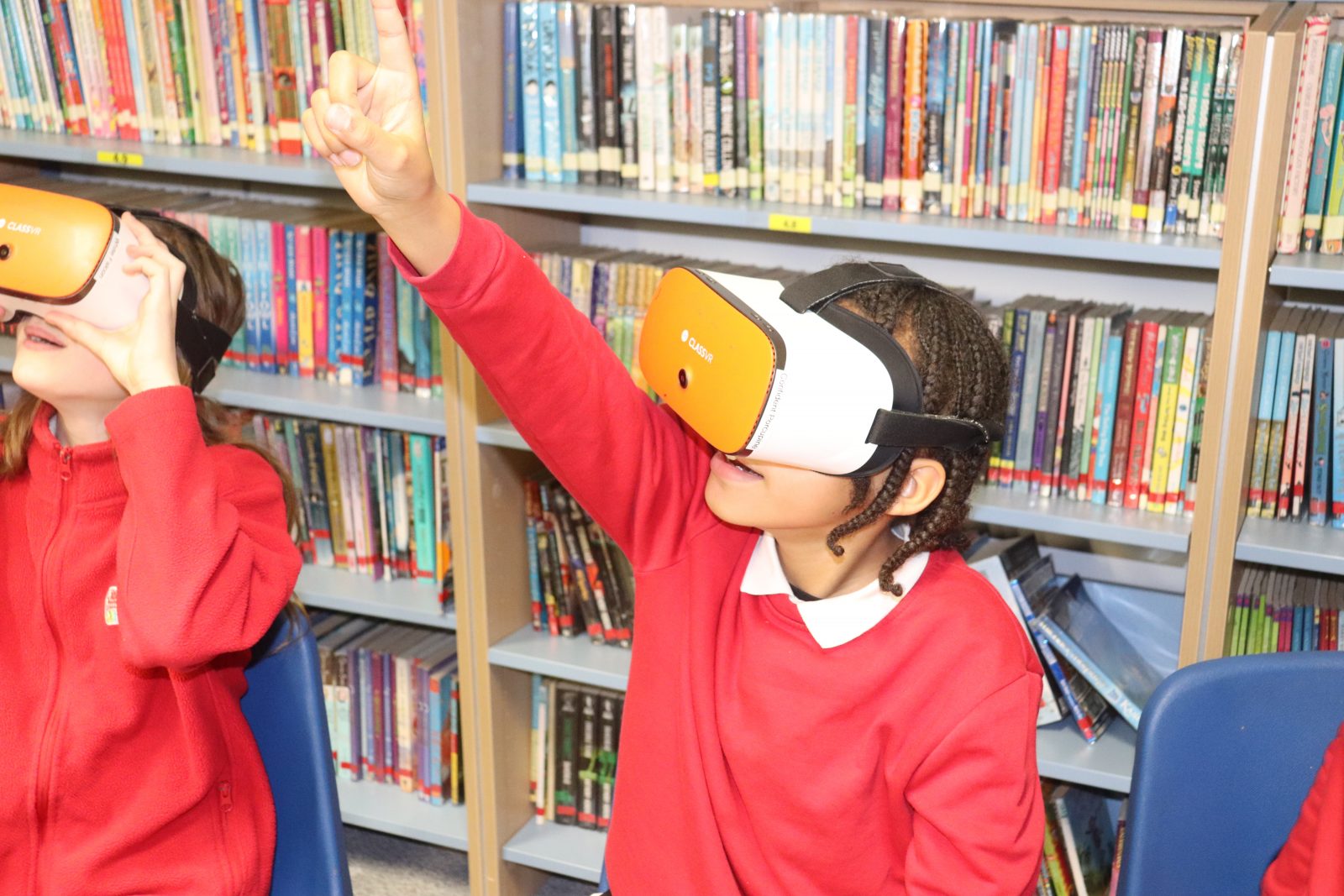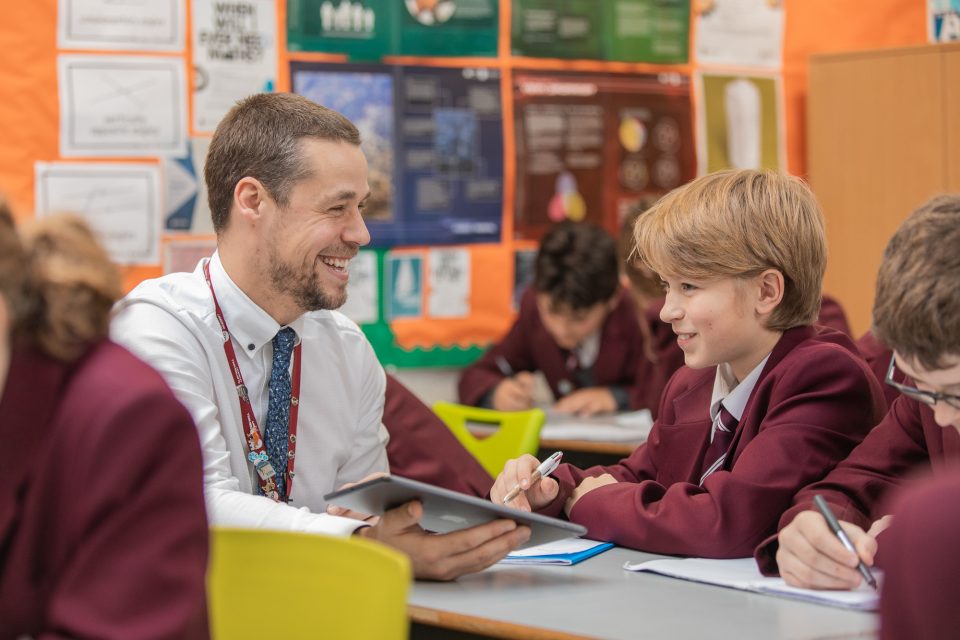Sparking imagination; removing the fear of learning; increasing inclusivity; creating a community of innovators. These are just some of the ways education leaders in the UK have described the impact digital transformation is having on their schools.
By engaging like-minded school leaders across the world and creating student-centred, immersive, inclusive experiences, Microsoft’s Showcase Schools initiative aims to provide pupils with future-ready skills. Leaders from three school trusts across the UK explain what being a Microsoft Showcase School has meant for them and how technology plays a role in shaping education and inspiring students.

Preparing ‘today’s children for tomorrow’s workforce’ at Cornerstone Academy
Jonathan Bishop has been at the forefront of integrating tech education for over two decades. As the CEO of Cornerstone Academy Trust, he oversees a rich curriculum across four primary schools in the Devon area.
“We embarked on a partnership with Microsoft 20 years ago, prior to the Showcase Schools initiative,” says Bishop. “In this time, we’ve developed the best system for our academy.” The Trust is responsible for several ‘curriculum hubs’’ (a Department of Education programme seen as a centre of excellence) including English and Computing.
“Technology underpins the fabric of society: it’s in the workplace, it’s in the home, it’s part of our social interactions and it should fundamentally be seen as the glue that binds it together,” explains Bishop. “Employability is not about training pupils to use a piece of software — it’s about the underlying tools that enable our lives in the modern world that we live. Ultimately, we’re preparing today’s children for tomorrow’s workforce.”
Technology as an educational enhancement
For Bishop, the key to success is the craft of teaching, with pedagogy being focal to a tech strategy. “I’m a teacher at heart, and technology isn’t a replacement for great quality teaching,” he says. “You don’t require a computer to impart knowledge or inspire people. But to be able to exist in a modern world, technology and teaching need to work together, with tech underpinning the curriculum and its implementation.”

For Bishop, the most significant aspect of the Showcase Schools initiative is the wider connection it brings to a global community of educators. “The Showcase network is empowering, thought provoking, and allows people to see beyond the day-to-day pressure. Bringing together research-led practice and innovation at a national and international level keeps the teaching community fresh,” says Bishop.
Advice: Get buy-in for digital transformation at board level
Bishop emphasises the need for senior endorsement. “Digital transformation is a strategic journey for school and Trust alike, and it requires buy-in from senior leadership,” he states. “Failure to prioritise it at the board level can result in the idea becoming nothing more than a fleeting trend, rather than a lasting investment.”
Interactive lessons at Clayton Hall Academy
It’s no surprise that Caty Reid is a big fan of technology in education. In her dual role as Principal of Clayton Hall Academy and Digital Transformation Lead for the United Endeavour Trust in Staffordshire, she has a bird’s-eye view of the impact of educational technology in action.
“I often liken Clayton Hall to a stick of rock, because if you were to cut it in half it would say ‘digital transformation’ all the way through,” says Reid. “There is a digital solution for everything we do, and students are at the heart of this.”
Clayton Hall Academy is a comprehensive, multicultural school with students from diverse backgrounds. “Digital transformation enhances employability and life skills, setting young people up for success in our academies and beyond,” Reid says. “Technology is at the heart of our educational approach but since Clayton Hall became a Microsoft Showcase School in the summer of 2022, our digital journey has really accelerated.”
Bringing lessons to life with technology
For Reid, technology is a way to bring lessons to life. “It sparks imagination,” she says. “Take geography, for example. Say you’re learning about coastal erosion at Dover, but you’ve never been there and don’t know what the cliffs look like; by finding pictures online it immediately makes the lesson interactive and fosters discussion. We know that collaborative work helps build the skills required to gain the highest GCSE grade.”

Reid is delighted with the inclusivity that technology brings to the schools across her trust. “Some of the accessibility tools have really changed the lives of our students with special educational needs,” Reid explains. “One of our students has significant visual impairment; previously, staff magnified worksheets onto A3 sheets of paper so she could read the materials more easily. Now she uses a device to independently magnify her work to the level she needs. She no longer feels singled out and she’s really flourished because of it.”
Teachers are seeing the benefits of digital transformation, too. Marking load is significantly reduced thanks to Microsoft Forms. Teachers set assignments and learning resources on Teams, and they use Power BI to track attendance. “Streamlining admin in this way means we can spend more time intervening and less time doing analysis,” says Reid. “It’s made such a difference to our school and the wellbeing of our staff.”
Digital transformation is a partnership
For teachers keen to bring digital transformation to their school but worried they don’t have the technical prowess to get started, Reid has some words of reassurance.
“You don’t have to be a tech whizz to lead digital transformation — my children tease me that I can’t work a printer!” says Reid with a laugh. “What you need is a partnership. I’m responsible for leading digital transformation, and I work with the Trust’s IT lead, John Dooley. John is the technical expert ensuring our equipment is connected and works well, while I focus on the pedagogy in the classroom and how we can use it. The educator and tech guru collaboration works well.”
Removing barriers to learning at Discovery Trust
As the CEO of Leicestershire’s Discovery Trust, Paul Stone leads the strategic direction of 13 primary schools and two Social, Emotional and Mental Health needs (SEMH) with a total of 4800 pupils.
“Our schools are located in some of the most deprived areas of the UK,” says Stone. “Thanks to technology, we’ve been able to focus on our most disadvantaged learners, and we’re seeing an immensely positive impact. In fact, in reading and maths— two of the curriculum areas we have focused on — are achieving above national average targets in our schools.”
As an Academy, the 13 schools work together as a group to find economies of scale, such as sharing workload and collaborating on initiatives. But for Stone, it’s imperative that each school has its own individual vision. “Schools need to keep their unique character and serve their local community, and leaders need to be supported to do so. The Showcase framework provides an excellent structure for this… we’re seeing that children of all abilities are increasingly motivated and engaged in their learning.”
Structures and tools to remove the fear of learning
The schools within the Discovery Trust have a high number of children with special needs and technology has been a crucial part of their education. “Tech has removed a lot of the fear of learning because children can use accessibility tools and accelerator tools,” explains Stone. “By removing barriers, pupils can apply their learning in different ways and feel like they’re achieving.”

The benefits have extended to teaching staff. Nationally, teacher turnover rate is 8 percent but the Discovery Trust’s rate is half that, at 4 percent. “We believe our retention rates are higher because technology has brought efficiencies, which means more time for teachers to teach and less time spent on admin,” Stone says. “Teachers are more excited about the job.”
For Stone, embracing technology in education is a self-fulfilling prophecy: “The more you engage with it, the more impact you see. Provide the time for teachers to learn IT to then be able to apply it in the classroom, and you’ll end up achieving great things; the educational opportunity for children is limitless.”
Advice: Start small and build from there
Stone’s top tip is to start small. “Don’t get overwhelmed. You don’t need to do everything all at once. Start off with one thing that makes an impact. For the Discovery Trust, we started by embedding Immersive Reader.”
He is also emphatic about the importance of allowing teachers the time to practice so they can really understand how to get the most out of the technology. “We provide all our teachers with an extra hour of non-contact during the week for this very reason,” says Stone. “It’s made such a difference as they can then apply their learning in the classroom.”
For more information on the Showcase Schools initiative check out the Program website. To apply to become a Showcase School, visit the Registration page.






